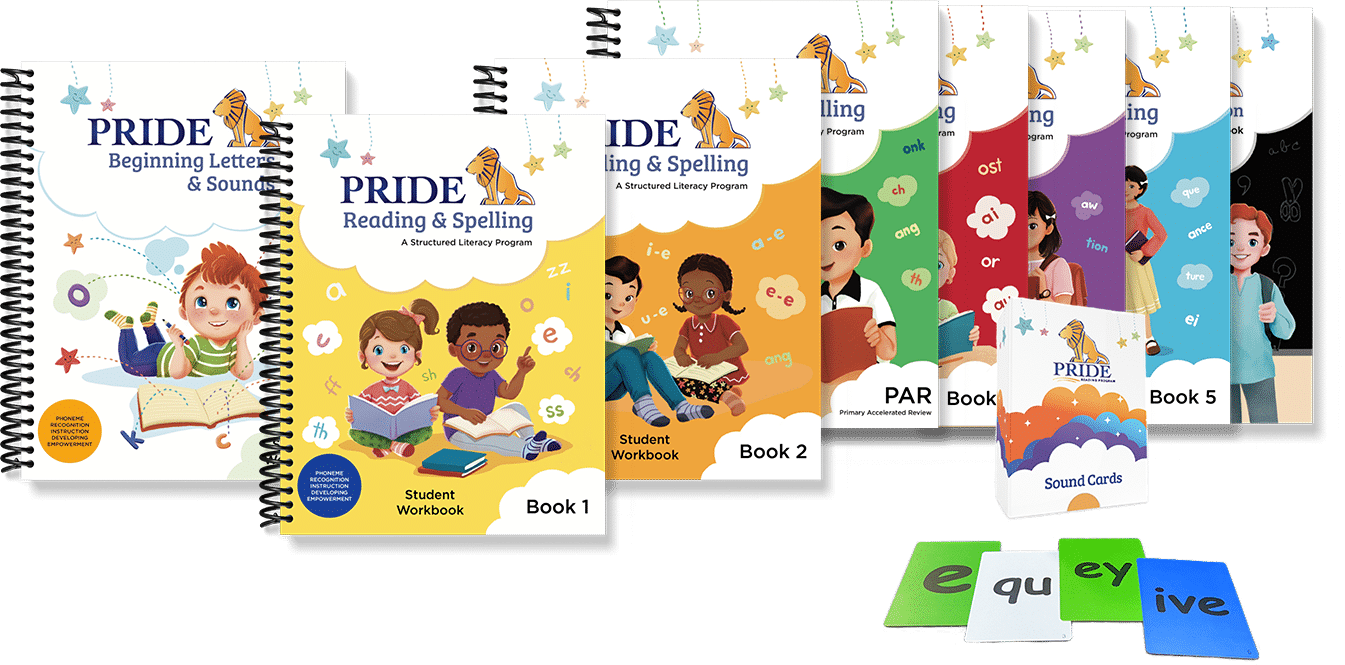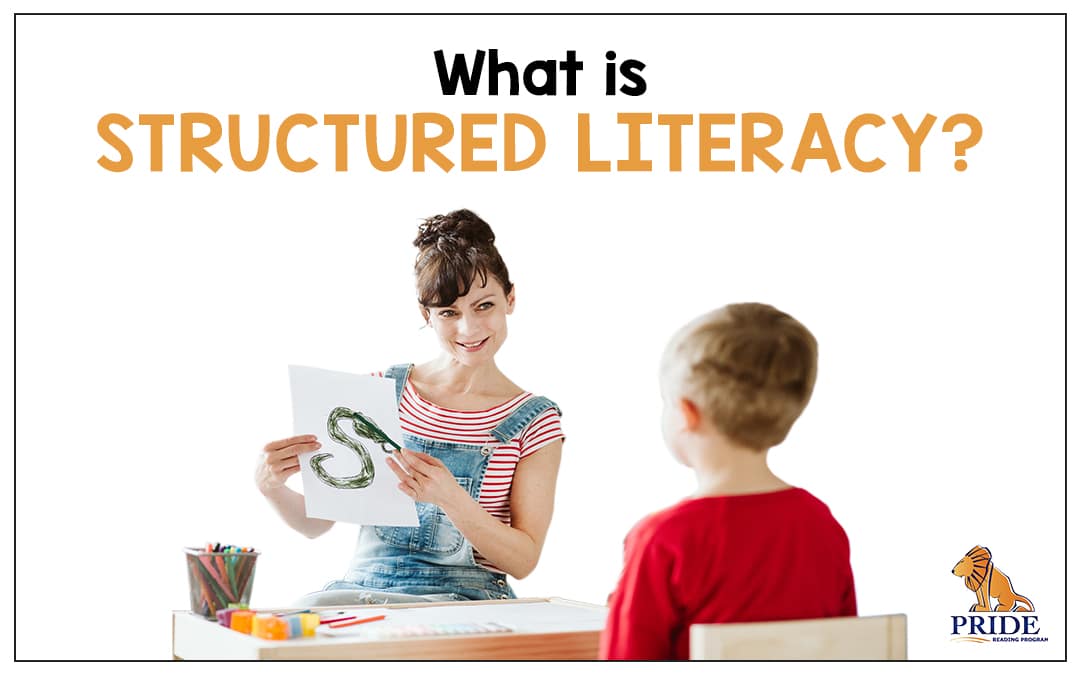Structured literacy is an approach that is often recommended for students with dyslexia and specific learning disabilities because it is well supported by research and is an evidence-based method. Structured literacy integrates phonological awareness, reading (decoding), spelling (encoding), sight words, fluency, and comprehension using explicit and systematic instruction. Here is a step-by-step explanation of what structured literacy is, videos and additional resources, and a simple guide on how to teach structured literacy to your students.
How do you Teach Structured Literacy?
In Structured Literacy instruction, teachers guide students through systematic and sequential mastery of each phoneme in the English language using explicit and direct instruction.
Explicit and Direct Instruction
In structured literacy, students are taught with explicit and direct instruction. This means that skills and concepts are taught clearly and directly by a teacher. Explicit instruction includes modeling, guided practice, and independent practice of the skill being taught.
Example: The teacher will first present a lesson demonstrating vowel consonant e syllable and model the lesson for the student. The teacher will then do the lesson together with the student, then finally ask the student to do it without guidance. The teacher provides immediate feedback and corrections when needed.
I do, we do, you do.
Systematic, Sequential, and Cumulative Instruction
The explicit instruction in structured literacy is carefully built around a scope and sequence. This scope and sequence dictates the order in which each concept or skill is taught. Each lesson builds upon itself and the student never has to read or spell anything they haven’t been introduced to yet, which is why the stories and text in structured literacy are always decodable. The students only read and spell what they have been explicitly taught.
Each individual skill is taught in isolation beginning with the most basic levels of phonics and developing into the most advanced spelling rules and morphological concepts. The student does not move on to a new concept until the student is ready. Once that student moves forward with a new concept, he or she keeps reviewing already learned skills.
Example: Here is the scope and sequence of a structured literacy curriculum. Although the scope and sequence will vary from program to program, this will give you an example. Click Here!
What is Taught in Structured Literacy?
Structured Literacy focuses on the teaching of phonology, orthography, systematic phonics, and comprehension. What does this mean? Here is a breakdown of each component taught in structured literacy:
Phonology
Phonology is the study of the sound structure of spoken language. Students are taught blending skills, segmenting skills, and manipulation of speech sounds within words that lead to phonics skills.
Example:
“Say rib. Say rib again but this time, instead of /r/, say /b/.” (bib)
Orthography
Orthography is the conventional spelling system of a language. Students are taught to use orthographic knowledge (letters-symbols) to read and spell words. Students learn to associate the sounds (phonemes) with the letters (graphemes) that represent them, and then form the letters that spell the sound.
Example:
“Say wax. Spell the word wax by writing the letters on your palm. Now, pick up your pen and write the word wax on your paper.”
Systematic Phonics
Systematic phonics is the method of teaching students how to connect the graphemes (letters) with phonemes (sounds) using a clear and well-thought-out scope and sequence. This includes:
- Consonant and short vowel sounds
- Digraphs and blends
- Long vowels and other vowel patterns
- Six Syllable patterns (closed, open, vowel-consonant-e, r-controlled, vowel pair/diphthong, consonant –le)
- Prefixes, suffixes, and roots
Semantics/Comprehension
In structured literacy, students are taught the relationship between word meanings and the meaning of groups of words. Relationships between words, phrases, clauses, and sentences are explicitly taught and lead to reading and comprehending paragraphs, text, and stories. Structured Literacy addresses all of the foundational elements needed for reading comprehension as outlined in the Simple View of Reading and the Scarborough “Rope” model.
Where Can I Learn More About Structured Literacy?
Barshay, Jill. (2020). Four things you need to know about the new reading wars. The Hechinger Report. https://hechingerreport.org/four-things-you-need-to-know-about-the-new-reading-wars/
Early Reading Instruction: What Science Really Tells Us about How to Teach Reading (The MIT Press, 2004) https://mitpress.mit.edu/books/early-reading-instruction
Hanford, Emily. (2018). At a loss for words: How a flawed idea is teaching millions of kids to be poor readers. APM Reports. https://www.apmreports.org/story/2019/08/22/whats-wrong-how-schools-teach-reading
Here’s Why Schools Should Use Structured Literacy by Dr. Louise Spear-Swerling. 2019.
Seidenberg, M. (2017). Language at the Speed of Sight: How We Read, Why So Many Can’t, and What Can Be Done About It. New York, N.Y: Basic Books.
Also, check out these Websites for additional information:
The PRIDE Reading Program
Thank you so much for reading my post and learning more about the structured literacy approach. You might also enjoy reading my previous posts:
The Science of Reading: What All Teachers Should Know
How is Orton-Gillingham Evidence-Based Reading Instruction?
Show me an Orton-Gillingham Lesson
Please don’t leave without checking out the PRIDE Reading Program. The PRIDE Reading Program is an Orton-Gillingham curriculum that is used by teachers, tutors, and homeschooling parents worldwide with great success.


Karina Richland, M.A., is the author of the PRIDE Reading Program, a multisensory Orton-Gillingham reading, writing, and comprehension curriculum that is available worldwide for parents, tutors, teachers, and homeschoolers of struggling readers. Karina has an extensive background in working with students of all ages and various learning modalities. She has spent many years researching learning differences and differentiated teaching practices. You can reach her by email at info@pridereadingprogram.com or visit the website at www.pridereadingprogram.com

